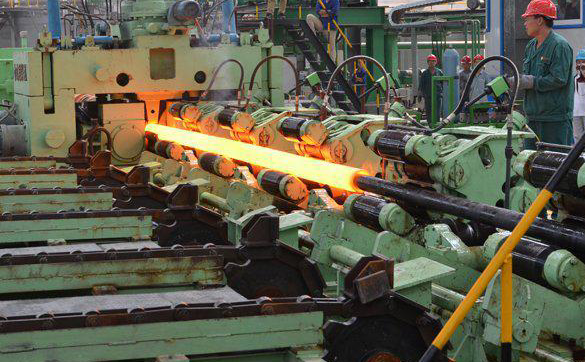Annealing is a metal heat treatment process in which the metal is slowly heated to a certain temperature, kept for a sufficient time, and then cooled at a suitable rate. The main purpose is to release stress, increase material ductility and toughness, and produce special microstructures.
Annealing heat treatment is divided into complete annealing, incomplete annealing and stress relief annealing, diffusion annealing, spheroidizing annealing, and recrystallization annealing. The mechanical properties of annealed materials can be tested by tensile test or hardness test. Many steels are supplied in the state of annealing and heat treatment. The hardness of the steel can be tested with a Rockwell hardness tester to test the HRB hardness. For thinner steel plates, steel strips and thin-walled steel pipes, a surface Rockwell hardness tester can be used to test the HRT hardness.Heating the steel to a certain temperature above or below the critical point Ac1, holding it for a period of time, and then slowly cooling it in a furnace or buried in a furnace or a medium with poor thermal conductivity to obtain a stable structure close to the equilibrium state.

Purpose of annealing:
①Improve or eliminate various structural defects and residual stress caused by steel in the process of casting, forging, rolling and welding, and prevent deformation and cracking of the workpiece;
② soften the workpiece for cutting;
③ Refine the grain and improve the structure to improve the mechanical properties of the workpiece;
④ Prepare the organization for final heat treatment (quenching, tempering).
Types of annealing processes:
In production, the annealing process is widely used. According to the different purposes of annealing required by the workpiece, there are various annealing process specifications. The annealing process includes complete annealing, spheroidizing annealing, isothermal annealing, graphite annealing, diffusion annealing, stress relief annealing, incomplete annealing, post-weld annealing, etc.
1. Fully annealed
It is used to refine the coarse superheated structure with poor mechanical properties after casting, forging and welding of medium and low carbon steel. Heat the workpiece to a temperature of 30-50°C above the temperature at which all ferrite transforms into austenite, hold for a period of time, and then slowly cool with the furnace. During the cooling process, the austenite transforms again, which can make the steel structure thinner. .
2. Spheroidizing annealing
It is used to reduce the high hardness of tool steel and bearing steel after forging. The workpiece is heated to 20-40°C above the temperature at which the steel begins to form austenite, and then slowly cooled after heat preservation. During the cooling process, the lamellar cementite in the pearlite becomes spherical, thereby reducing the hardness.
3. Isothermal annealing
It is used to reduce the high hardness of some alloy structural steels with high nickel and chromium content for cutting. Generally, it is first cooled to the most unstable temperature of austenite at a relatively fast rate, and the austenite is transformed into trosteite or sorbite for an appropriate time, and the hardness can be reduced.
Recrystallization annealing is used to eliminate the hardening phenomenon (increase in hardness and decrease in plasticity) of metal wires and sheets during cold drawing and cold rolling. The heating temperature is generally 50 to 150°C below the temperature at which the steel begins to form austenite. Only in this way can the work hardening effect be eliminated and the metal soften.
4. Graphite annealing
It is used to make cast iron containing a large amount of cementite into malleable cast iron with good plasticity. The process operation is to heat the casting to about 950 ℃, keep it for a certain period of time and then cool it properly to decompose the cementite to form flocculent graphite.
5. Diffusion annealing
It is used to homogenize the chemical composition of alloy castings and improve their performance. The method is to heat the casting to the highest possible temperature without melting, and keep it warm for a long time, and slowly cool after the diffusion of various elements in the alloy tends to be uniformly distributed.
6. Stress relief annealing
It is used to relieve internal stress of steel castings and welded parts. For iron and steel products (
carbon steel seamless pipe), it is 100 to 200 °C below the temperature at which austenite begins to form after heating, and the internal stress can be eliminated by cooling in the air after heat preservation.
7. Incomplete annealing
The heating temperature is between Ac1~Accm, and the cooling rate is above 500~600℃, the carbon steel is 100~200℃/h, the alloy steel is 50~100℃/h, and the high alloy steel is 20~60℃/h , mainly used for hypereutectoid steels.
8. Post-weld annealing
The TIG welding test was carried out on YG30 cemented carbide and 45 steel using pure Fe as filler metal. Scanning electron microscope was used to analyze the microstructure of YG30/weld interface area before and after annealing. The results show that when industrial pure Fe is used as the filler metal, the η phase in the as-welded state remains unchanged after annealing at 1050 ℃; new η phase begins to form after annealing at 1150 ℃; the η phase increases with the increase of annealing temperature and holding time. During annealing, the new η phase nucleates at the WC-γ phase boundary, engulfs the WC grains and grows up, and distributes at the boundary of the WC grains.
Read more: Differences between Annealing, Normalizing, Tempering and Quenching of Seamless Pipes


